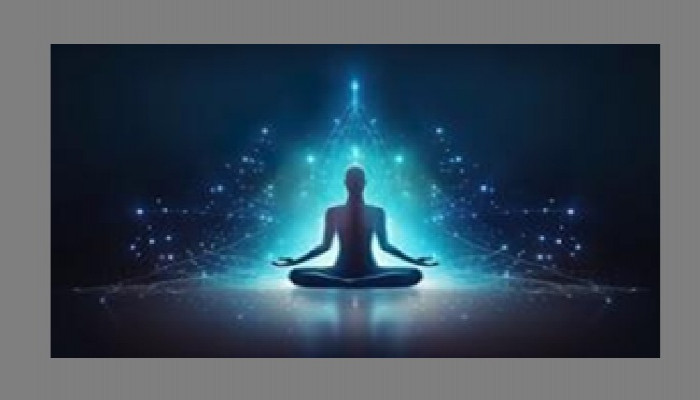Background
Across continents and cultures, countless individuals have transformed their lives through Yoga. Consider just three examples from entirely different backgrounds:
• Nouf Marwaai — Saudi Arabia
• Dr. Sara Lazar — United States
• Wim Hof — Netherlands
What unites these individuals? Each discovered within Yoga a powerful catalyst for healing, growth, and inner transformation.
Nouf Marwaai
Born a sickly child, Nouf was diagnosed with systemic lupus at age 17 and was told by doctors that there was little hope for recovery. During that difficult period, she found a Yoga book her father had brought home from his travels and began practising a few asanas. Over time, her health improved so remarkably that she completed university with high honours.
In interviews, she has shared that after embracing Yoga and Ayurveda, she lived without medication and even overcame cancer. Yoga changed the trajectory of her life so dramatically that she went on to become a highly respected instructor and founded the Arab Yoga Foundation in Saudi Arabia.
Nouf played a pivotal role in the legalisation and official recognition of Yoga in Saudi Arabia. Her belief is clear:
“Yoga is the need of the hour because it is a costless holistic wellness.”
She views Yoga as a tool that liberates individuals from psychological distress, enabling healthier and more harmonious societies.
Dr. Sara Lazar
While pursuing graduate studies in molecular biology, Dr Lazar suffered an over-training injury while preparing for the Boston Marathon. During her recovery, she turned to Yoga—unexpectedly discovering increased calmness, empathy, and emotional balance. Curious about these changes, she shifted the focus of her career to study Yoga’s scientific impact.
Today, Dr. Lazar is an associate researcher in the Department of Psychiatry at Massachusetts General Hospital and an assistant professor in psychology at Harvard Medical School. For over 15 years, she and her team have studied how meditation and Yoga reshape the brain, becoming the first to demonstrate their link to cortical thickening and neuroplasticity.
Her research—featured in major outlets—shows that the benefits of Yoga and meditation extend from clinical settings to healthy individuals, especially in the management of chronic pain and stress.
Wim Hof
Known worldwide as “The Iceman,” Wim Hof is a Dutch extreme athlete and motivational figure recognised for his extraordinary ability to withstand extreme cold. He has set several world records, including swimming under ice, prolonged full-body contact with ice, and running a barefoot half-marathon on snow.
He credits these abilities to the Wim Hof Method—a blend of controlled breathing, cold exposure, Yoga, and meditation.
For more information, you may watch the video and read here:
What Connects These Individuals?
Despite vastly different backgrounds, all three discovered within Yoga a set of tools that profoundly transformed their lives—and, in turn, enabled them to positively influence countless others.
Their journeys reveal a powerful truth:
Yoga contains hidden treasures capable of transforming individuals, societies, and potentially the world.
A Global Opportunity: Yoga for All
In 2015, the 21st of June every year was declared as an International Yoga Day by the United Nations Organisation in response to the appeal made by India’s Prime Minister Narendra Modi, which was co-sponsored by 177 countries and the resolution was passed by 193 countries by consensus, without any opposition.
Yoga had already been popular and was being practised by a large number of people all over the world. However, since 2015, it has become much more popular and a large number of people around the world have adopted it as part of their routine now.
This is one of the most invaluable and ancient gifts of India to the world.
And, amazingly, it’s at least 6000 years old.
It is truly a philosophy of life, and it means the Union of Body, Mind and Spirit.
This word is derived from the Sanskrit root “yuj” meaning “to join”, “to yoke” or “to unite”.
According to Yogic shastras (scriptures), the practice of Yoga leads to the union of individual consciousness with universal consciousness. And, according to modern researchers, everything in the universe is only a manifestation of the same quantum realm.
Today, most people across the world know this word, and the general understanding is that it basically involves various kinds of difficult postures, which is true, but only partially.
However, actually, that is just one of the most superficial aspects of this profound science that has an infinite potential for transforming the lives of people as well as our planet.
Ashtanga Yoga (Eight Limbs of Yoga)
According to one of the schools of Yoga, followed by most today, called Ashtanga Yoga, meaning eight-limb Yoga, compiled by ancient sage Patanjali sometime in 4th century, it involves eight limbs or steps such as Yama, Niyama, Asana, Pranayama, Pratyahara, Dhyaan, Dharana, and Samadhi.
Yama involves restraints, Niyama involves observances, asanas are postures, and pranayama involves breathing exercises. Pratyahara means the disassociation of one’s consciousness from the sense organs. Dharana is akin to concentration, Dhyana is contemplation or meditation and Samadhi is integration with the superconscious.
The most important aspect of this philosophy is that Yama enjoins practitioners to observe the following:
- Ahimsa (Non-Violence)
- Asteya (Non-Stealing)
- Satya (Truthfulness)
- Aparigraha (Non-Possession)
- Brahmacharya (Control over sense organs)
Niyama guides the practitioners to observe the following:
- Sauch (Cleanliness of Body and Mind)
- Swadhyaya (Self-Study)
- Santosh (Contentment)
- Tapas (Penance)
- Ishwar Pranidhan (Surrender to Divinity)
According to Patanjali, Yoga is complete control over one’s personality.
Medical research in recent years has uncovered many physical and mental benefits that Yoga offers, corroborating the experiences of millions of practitioners.
Any individual practising yoga in the true sense will be content and will seek inner happiness. Practising yoga from early childhood helps in character building, which in turn will bring harmony in all walks of life. Yoga has a huge potential to completely turn around the lives of people and bring immense benefits to the whole world.
Why Teach Yoga in Schools?
If integrated early, Yoga can nurture healthier individuals and societies:
• Reduces ADHD, bullying, childhood obesity, and drug abuse
• Enhances physical and emotional well-being
• Strengthens families and communities
• Reduces healthcare costs and improves societal stability
These benefits are well-documented and already experienced worldwide. Hence, introducing Yoga from the earliest grades in all schools and making it a required part of education can have extraordinary societal and financial benefits.
Healthier citizens mean lower healthcare costs, stronger families, and more harmonious societies.
References
- How yoga became a tool to beat cancer for Saudi Arabia’s Nouf Marwaai
- Nouf Marwaai
- Nouf Al-Marwaai, president of the Saudi Yoga Committee
- The Mayman Show
- Mindfulness Training Promotes Neuroplasticity In Young Adults with A History of Childhood Maltreatment
- How Meditation Changes the Structure of the Brain
- Wim Hof’s Yoga Manuscript & Meaning Behind It
- What is the Wim Hof Method
- History of Yoga Full Film English







Comments